Showing 101–110 of 147 results
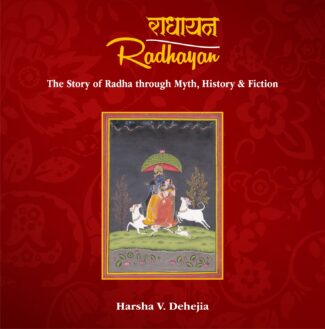
This volume weaves an enchanting story of Radha with a multicoloured thread, where myth blends into history and fiction challenges reality and Radha emerges in all her poetic glory in this spellbinding story. Here in miniature paintings, through line and colour, Radha comes alive as a multidimensional, many-nuanced paragon of love. This is Radhayan.
Of all the mythic characters in the Hindu pantheon none is more enigmatic and evocative than Radha. Appearing for the first time in Jayadevas Gita Govinda, where she is the ultimate beloved, she traverses political dynasties, royal ateliers and social barriers to emerge as a consort of Krishna. Brought alive by poets, developing a colourful presence in the hands of painters, dancing through prosceniums and acquiring a lyrical life through songs, both classical and popular, Radha is present in homes and havelis, celebrated by the the samajika and the rasika, has a presence in temples and roadside shrines as a symbol of pure and eternal love. And yet there are so many questions about her life; poets differ in their portrayals of her, historians argue, dancers claim her through their interpretations and for the common person she is now a shringara rasa nayika and now a goddess. But Radha stands steadfastly alone refusing to be bound down by poets or potters, dancers or singers. Harsha V. Dehejia weaves an enchanting story of Radha with a multicoloured thread, where myth blends into history and fiction challenges reality and Radha emerges in all her poetic glory in this spellbinding story.
Vijay Sharma and his team of artists bring Radha colourfully alive with miniature paintings, for it is there rather than sculpture that Radha resides. She is essentially kavyamaya, her origins are in the minds of poets, it is there that she grows, dallies and evolves. And while her voice is heard in songs and her footsteps resonate with dancers, it is in miniature paintings, through line and colour, that Radha comes alive as a multidimensional, many-nuanced paragon of love.
This is Radhayan.
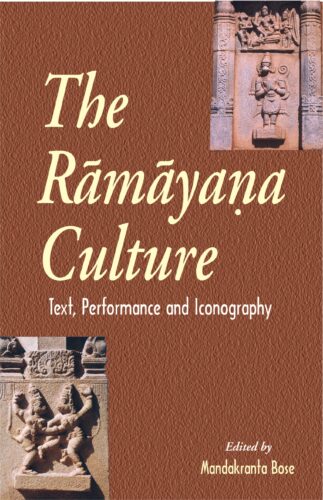
The essays in this volume approach the Ramayana from different perspectives textual criticism, art and architecture, and film to understand its ideological and aesthetic meanings. They address critical issues like the seminal status of Valmiki, gender representation in Ramayana and the importance of the so-called Ramayana derivatives.
These essays, originally presented at an international conference, are in the forefront of the modern response to an ancient work that has gained a new critical and social relevance in contemporary scholarship. Approaching the Ramayana from several angles in an attempt to understand its aesthetic and ideological meaning, they examine the epic through the perspectives of textual criticism, art, architecture and film. Thereby they address critical issues such as the seminal status of Valmiki, the underlying problem of canonicity itself, the importance of other — so-called derivative — Ramayanas, the implications of gender representation, and the cultural manipulation of social ideals relating to the position of women and the idealisation of love that achieves its highest value in marriage. Using the methods of rigorous textual and historical investigation, each essay seeks not only to uncover the layers of meaning in the complex structure of the epic in its varied forms but also to situate it critically in the cultures of South and Southeast Asia.
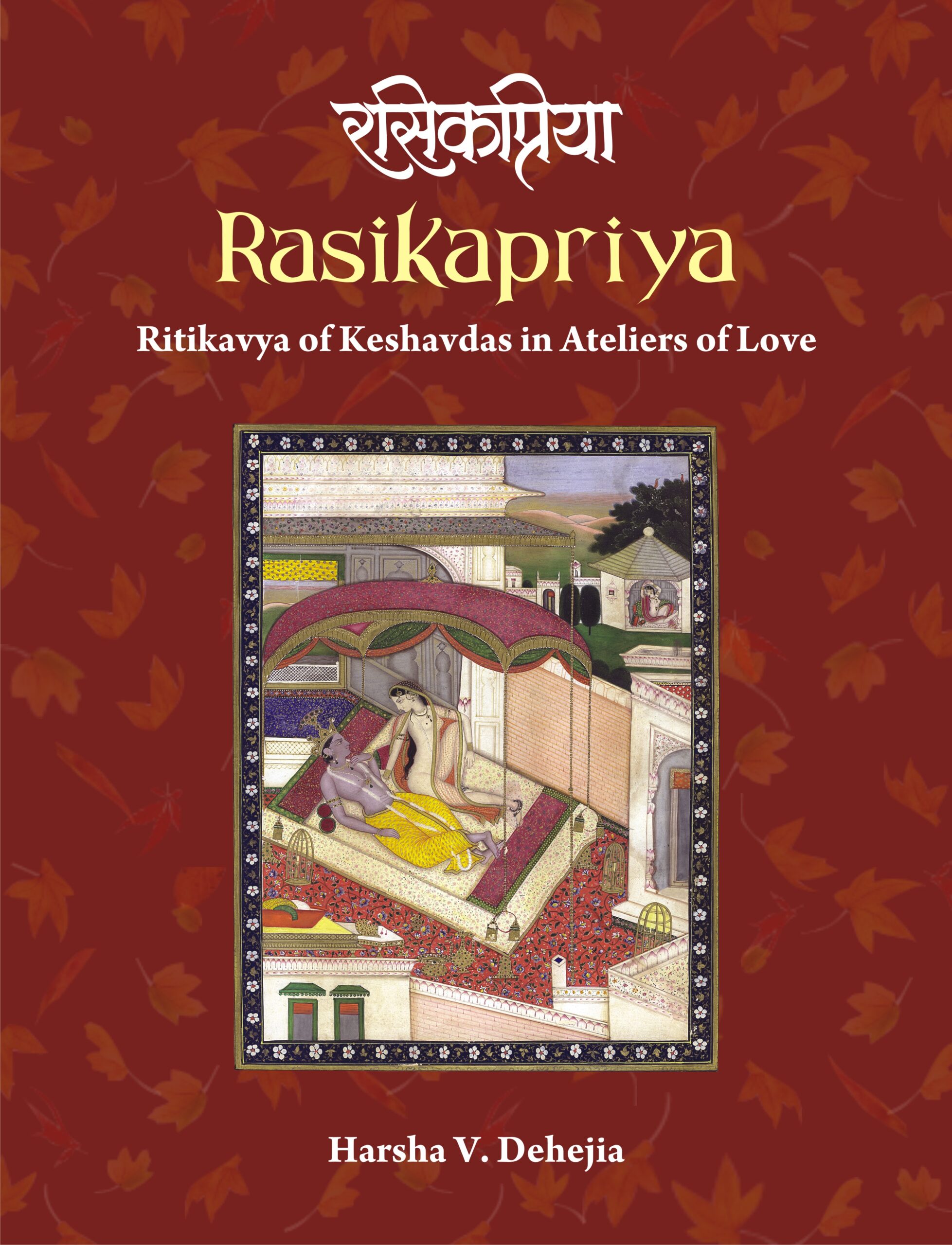
This book brings, for the first time, the translation of the entire text of Rasikapriya of Keshavdas in English with more than 400 paintings. In its pages are whispers of Krishna and Radha, and the hushed voices of the sakhis as they celebrate romantic moments of longing and belonging in the regal splendour of pranaya mandaps of havelis or verdant and idyllic groves.
Rasikapriya is a lakshan granth, a foundational text, of ritikavya or mannered poetry, and Keshavdas is the father of ritikal. It was the early seventeenth century, and in the court of Raja Indrajit of Orchha in Bundelkhand, Keshavdas, the court-poet, would recite short romantic verses and the gathered connoisseurs of poets, musicians and dancers would respond, and the atelier would resonate with the many textures and hues of shringara. This was the beginning of Rasikapriya, a text that is still central in the celebration of love. Keshavdas was a poets poet and he created a monumental text that remains the gold standard of ritikavya even today. And if that was not enough Rasikapriya inspired artists to create paintings illustrating its many dohas and savaiyas even in the lifetime of the poet.
Artists in the ateliers of Malwa, Mewar, Bikaner, Bundi and Kangra, among others, were touched by the evocative poetry of Rasikapriya and created paintings that were visual poetry. The names of Sahibdin of Mewar, Ruknuddin of Bikaner and Purkhu of Kangra stand out as artists that brought Rasikapriya to life through their mellifluous kalams.
Rasikapriya remains one of the most profusely illustrated texts in India and finds a place in collections of museums and individuals alike all over the world. This book brings together, for the first time, the translation of the entire text in English along with more than 400 paintings collected from a variety of sources. In its pages are whispers of Krishna and Radha and the hushed voices of the sakhis as they celebrate romantic moments of longing and belonging in the regal splendour of pranaya mandaps of havelis or verdant and idyllic groves. And as readers of this book recreate the music and the splendour of this text they cannot remain untouched by the sensuality and spirituality of shringara rasa and affirm that in celebrating the loves of Krishna one is never far from bhakti.
The book is a visual delight, a connoisseurs companion and a reference manual for scholars.
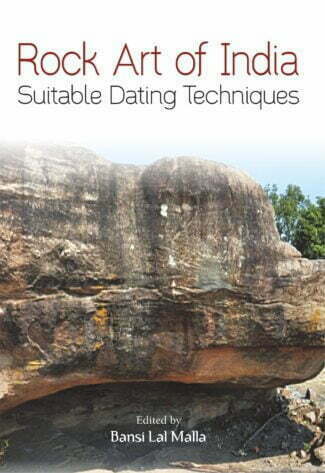
The present volume mainly emphasizes on a long due and much discussed and burning issues like that of what will be the Suitable Dating Techniques for Indian Rock Art. It includes not only new insights but also new dating results.
Rock art is a vital archaeological source to study and analyse the cognitive evolution of the human intellect across the world. The importance of rock art and its dating has long been a key issue of rock-art research and continues to be attended by difficulties about methodology, misinterpretation of findings and overconfidence in the reliability or precision of results. Most of the rock-art researchers primary focus in their investigations for rock-art dating at present has been to establish chronologies of different rock-art sites.
The present volume mainly emphasis on long due and much discussed issues like that of what will be the suitable dating techniques for Indian rock art. Some of the topics in the volume cover different dating methods such as the minimum dating by archaeological excavation, radiocarbon analyses of mineral accretions or their inclusions, radiocarbon analyses of paint residues or their inclusions, geomorphological methods, minimum or maximum ages derived from biological accretions, lichenometry, colorimetry of patinae, radiocarbon analyses of charcoal and beeswax figures, and any other methods of direct dating of rock art. This volume includes not only new insights but also new dating results. The data and interpretations put forward by various scholars are comprehensive and analytical. Most of their views are appropriate and hold promise in terms of recent trends in dating rock art.

The book studies the outstanding features of 31 famous palaces, pavilions and residences of the ruling class in different parts of Medieval India, from the thirteenth to the eighteenth century. It illustrates and discusses the layout plan of each building in detail.
The book brings out the outstanding features of the palaces, pavilions and residences of the ruling class in medieval India from the 13th to the 18th century. The focus is on structures that represent a group on religious and ethnic lines, i.e. Hindu/Islamic rulers, Indo-European Hindu or Dravidian Hindu or Afghani or Turk or Iranian rulers, and structures characteristic of particular periods and locales. Presenting some 31 famous buildings including the City Palace of Udaipur and Jaipur and the Lal Qila, Delhi and pleasure pavilions like the Hauz Khas, Delhi and Farah Bagh, Ahmadnagar, the work studies palaces and pavilions from the different regions of India. It illustrates the layout plan of each building in detail. Dr. Fredrick W. Bunce discusses the size, elaborateness or luxury of the royal structures which underlined the kings right to rule. With elaborate notes, he showcases their characteristics such as their tendency towards axiality and their symmetrical aspect, the Hindu rulers choice of the immutable square for the plan and their reliance on the shilpa-shastras, the east-west alignment of the structures, the labyrinthine character of residences/palaces, and their iconography that is unique to the Indian subcontinent. The volume has appendices that give the plans of other great structures of India and the world, list the major rulers of kingdoms in Indias different regions and provide a chronological list of major Indian monuments. The book will be extremely useful to students and scholars of Indian cultural history, particularly relating to architecture and iconography.
“Sacred Thread offers a visual and three-language presentation of Pataðjali’s YogasÂtra. These 196 short sentences form the foundation for the philosophy and practice of Yoga. One of six ways of viewing the world, this Darœana emphasizes human potential. Acknowledging the troubles caused by ignorance, egotism, addiction, and negativity, Yoga urges the cultivation of opposites: gentle behavior (ahiÚsÀ), truth-telling (satya), honesty (asteya), sexual restraint (brahmacarya) and avoidance of consumerism (aparigraha). Combined with practices of body, breath, and meditation, Yoga brings understanding and freedom. Working with the original Sanskrit text, the book renders photographic images to understand Yoga philosophy along with translation and explanation in English as well as Hindi. Without a syllable to spare, the Sanskrit text encapsulates the meaning of life and the possibility of freedom in four chapters: SamÀdhi, SÀdhana, Powers, and Freedom. The daily street life of India places the entire spectrum of Pataðjali’s wisdom on display. The authors have chosen from thousands of images to match Pataðjali’s glimpses of reality with what can readily be seen in Pune or Varanasi or Delhi. The English translation seeks to convey Pataðjali’s concision without adding too much explanation. The process of Yoga requires the quieting of thoughts. By letting the words stand on their own, a sense of connection emerges, conveying the thread of Yoga wisdom. Yoga is now studied and practiced in more than four dozen universities throughout India. The Hindi translation provides yet another bridge for comprehending the wisdom of Yoga. This book will be useful for the many people training to be experts in Yoga.”

This study, in an ethono-historical perspective, explores the multi linear evolution of Sakti worship in Orissa: from the pre-/protohistorical times to the late medieval epoch, and its continuity into the modern period with contextual focus on its probable genesis, historical development, festivals, ritualistic patterns, and cultural sources including myths, legends and folklore.
In the Hindu world-view, Shakti is the Mother of the Universe: the highest primal power. She is, accordingly, the all-pervading, intagible energy principle that propels the cosmos and its endless human dimensions with the life-throbs of activity and culture. Many are her songs, countless her stories, numerous her names. Worship of Shakti, as a pan-Indian phenomenon, predates Sanskritic influences of every kind. Combining his extensive fieldwork with diverse published and unpublished sources: archaeological, historical and religious, Francesco Brighentis study traces its presence in Orissa. Which, perhaps, provides the best paradigm of an age-old Goddess cult, deeply rooted in the autochthonous religious traditions of Eastern India. It is the first, all-encompassing study, in an ethono-historical perspective, exploring the multilinear evolution of Shakti worship in Orissa: from the pre-/proto- historical times to the late medieval epoch, and even its continuity into the modern period with contextual focus on its probable genesis, historical development, festivals, ritualistic patterns, and cultural sources including myths, legends and folklore. The book also incorporates, besides a description of important Shakta centres in Orissa, a study of the Divine Mothers iconographic features in Her multifarious manifestations. Together with around hundred illustrations highlighting the varied representations of Shakti in sculpture, this study will interest not only the scholars of archaeology, history and religion, but historians of art as well.

This inspirational guide to an open, critical exchange between India and the West is framed as a tribute to Dr. Bettina Baumer, an eminent scholar of Indology. Comprising 32 essays, segregated into three sections Indian philosophy and spirituality, Indian Arts and Aesthetics, and Interreligious and Intercultural Dialogue.
The present volume is a tribute to Dr. Bettina Baumer, an eminent scholar of Indology and Religious Studies in general and of Kashmir Shaivism in particular, and one of the important exponents of interreligious dialogue. It contains 32 essays which are divided into three sections, representing the main fields of study of Bettina Baumer. Section I – Indian Philosophy and Spirituality is focussed on the non-dualistic Tantric Shaivism of Kashmir. The range of topics reach from an analysis of the term Vishranti/ repose (A. Chakrabarti, Hawaii), the first English translation of the Tantric hymn Bahurupa-garbhastotra (H.N. Chakravarty, Varanasi) to the Parvan rites described in Chapter 28 of Abhinavaguptas Tantraloka (A. Padoux, Paris) and a commentary on the opening verses of Abhinavaguptas Tantrasara (A. Sanderson, Oxford). This focus is complemented by other important contributions, for example on Gandhis Ethical Thought (J. Prabhu, Los Angeles) and an analysis of the interactions between Vedanta and Tantra, as shown in the Lalitatrishatibhashya (A. Wilke, Munster). Section II – Indian Arts and Aesthetics contains nine significant articles from outstanding scholars: Kapila Vatsyayan (on the representation of Mount Kailasa in myth, temple architecture and classical literature), Devangana Desai (on the relevance of textual sources in the study of temple art), R.N. Misra (the history of Shaiva-Siddhanta in Central India), R. Nagaswamy (Guhavasi and Devaraja in Cambodia) and others, along with illustrations. The last section on Interreligious and Intercultural Dialogue wants to stimulate the dialogue between the Indian and Western history of thought especially with two articles: an examination of the concept of the Self and its knowledge in the Western mystical tradition, compared with the concept of self-knowledge in the Upanishads (A.M. Haas, Zurich); and a study of Nothingness as a key term in Johannes Tauler. This part also contains reflections on an overcoming of the social, economic and political crisis of our contemporary world: e.g. on the cross-cultural dimension of an ethics of justice (M. von Bruck, Munich) and on the interculturation of religious life (F. X. DSa, Pune/Wurzburg). This section ends with the key article by R. Panikkar on essential questions in the dialogue between Hinduism and Christianity, presented through the metaphor of The Drop of Water. The volume will be useful not only to scholars of Indology, Indian Philosophy, Indian Arts, and Religion, but also to anybody interested in an open, critical exchange between India and the West or in search of ways out of the fundamental crisis of our time.
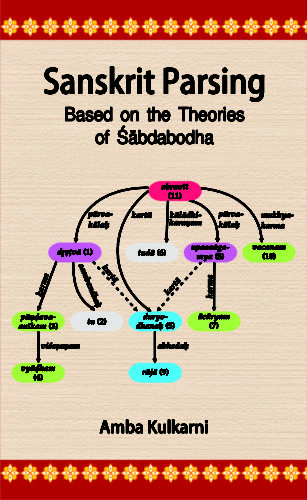
This book presents the key concepts from the Indian Grammatical Tradition (IGT) that are necessary for understanding the information flow in a language string and its dynamics. This is followed by a concrete application of building a parser for Sanskrit using the framework of Indian Grammatical Tradition.
India has a rich grammatical tradition, still extant in the form of Panini’s grammar as well as the theories of verbal cognition. These two together provide a formal theory of language communication. The formal nature of the theory makes it directly relevant to the new technology called Natural Language Processing.
This book, first presents the key concepts from the Indian Grammatical Tradition (IGT) that are necessary for understanding the information flow in a language string and its dynamics. A fresh look at these concepts from the perspective of Natural Language Processing is provided. This is then followed by a concrete application of building a parser for Sanskrit using the framework of Indian Grammatical Tradition.
This book not only documents the salient pieces of work carried out over the last quarter century under Computational Paninian Grammar, but provides the first comprehensive exposition of the ideas involved. It fills a gap for students of Computational Linguistics/Natural Language Processing who are working on Indian languages using Paninian Grammatical Framework for developing their computational models and do not have direct access to the texts in Sanskrit.
Similarly for the Sanskrit scholars and the students it provides an example of concrete application of the Indian theories to solve a contemporary problem.
| There are no products |